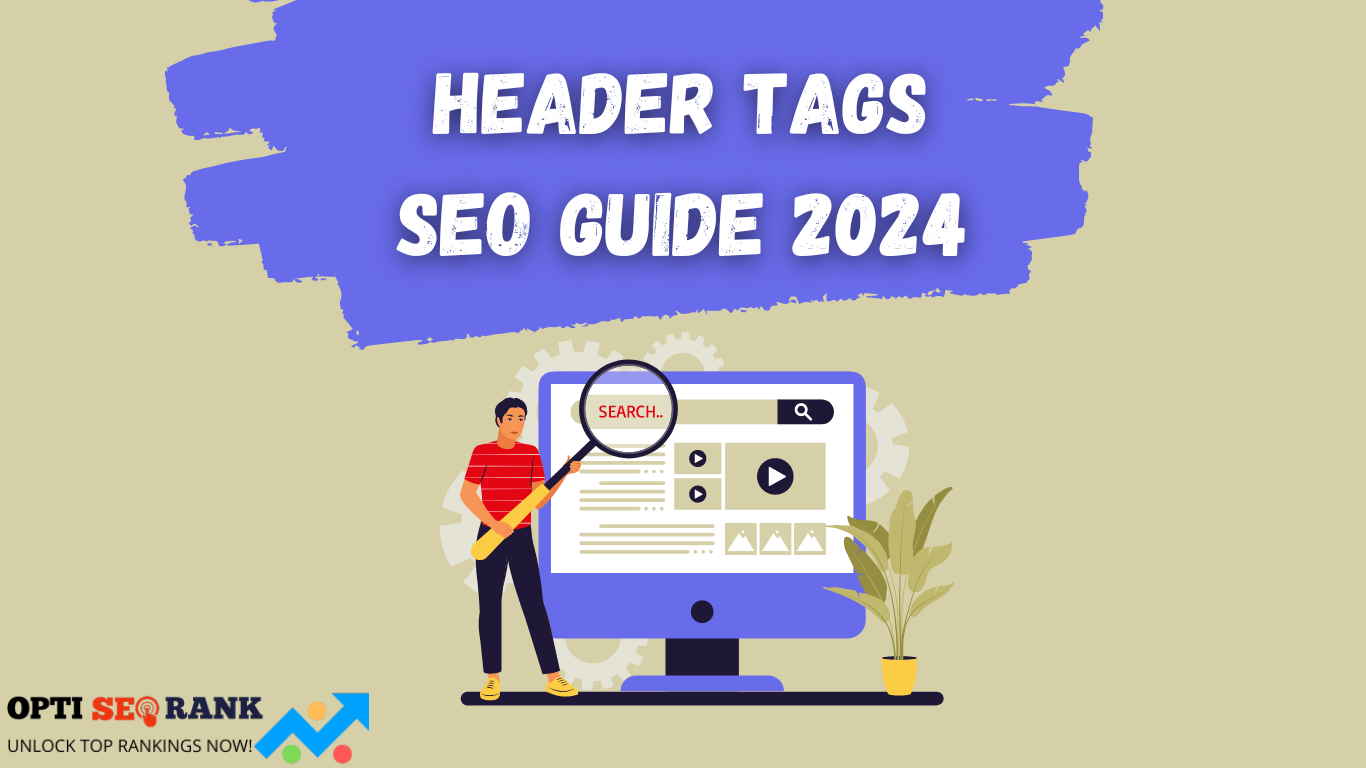Header tags play a crucial role in SEO by organizing content and improving readability. They help search engines understand the structure of your page.
Header tags, ranging from H1 to H6, are essential for SEO. They break down content into manageable sections, making it easier for readers and search engines to comprehend. The H1 tag typically represents the main title, while H2, H3, and subsequent tags denote subheadings.
Proper use of header tags can significantly enhance user experience and keyword optimization. In 2024, understanding the strategic placement and use of these tags is vital for improving organic search rankings. This guide aims to demystify SEO headers, providing actionable insights for effective content structuring.
Importance Of Header Tags
Header tags play a crucial role in SEO and user experience. They help search engines understand content structure. They also guide readers through the text. Using header tags correctly can improve your site’s ranking.
Boosting Seo
Search engines use header tags to index your content. Headers indicate the importance of each section. Using relevant keywords in header tags can boost your ranking. Headers also make your content more scannable for search engine bots.
Here’s how to use header tags effectively:
- Use only one
tag per page. - Include keywords in your
and
tags. - Maintain a logical hierarchy in your headers.
Enhancing User Experience
Header tags improve the readability of your content. They break down long texts into manageable sections. This makes your content easier to read and understand.
Clear headers also help users find information quickly. This can reduce your site’s bounce rate. Users are more likely to stay and read if they find what they need fast.
| Header Tag | Purpose |
| Main title of the page | |
| Major sections | |
| Sub-sections |
Use header tags to make your content visually appealing. This can keep readers engaged longer.
Types Of Header Tags
Understanding the types of header tags is vital for SEO. Header tags help structure your content and make it easier to read. They also tell search engines what your content is about. This section explains the different types of header tags and best practices for using them effectively.
H1 To H6 Explained
Header tags range from H1 to H6. Each serves a unique purpose. Here’s a breakdown:
| Header Tag | Purpose |
| H1 | The main title of the page. Use only once. |
| H2 | Subheadings that divide main sections. Use multiple times. |
| H3 | Sub-subheadings under H2. Further divide content. |
| H4 | Subheadings under H3. Used less frequently. |
| H5 | Subheadings under H4. Rarely used. |
| H6 | Subheadings under H5. Least used. |
Best Practices For Each
- H1: Make it descriptive and include primary keywords. Only one H1 per page.
- H2: Use for main sections. Include secondary keywords.
- H3: Use for sub-sections. Keep it relevant to the H2 above.
- H4: Use for smaller sections within H3. Keep it concise.
- H5: Use sparingly. Only for very detailed sections.
- H6: Rarely needed. Only use if absolutely necessary.
Proper use of header tags improves your SEO and user experience. Follow these best practices for better search rankings.
Keyword Placement
Effective keyword placement in header tags enhances SEO performance. Headers structure content, guiding both users and search engines. Strategic keyword use in headers boosts rankings and content clarity.
Primary Keywords In H1
The H1 tag should include the primary keyword. It tells search engines the main topic of the page. This boosts the content’s relevance. Ensure the H1 is unique and descriptive.
| Element | Content |
| H1 Tag | Primary Keyword |
Supporting Keywords In H2 To H6
Use supporting keywords in H2 to H6 tags. This creates a hierarchy. H2 tags cover main sections. H3 to H6 tags detail subtopics. Each header should include relevant keywords.
- H2 Tags: Main Sections
- H3 Tags: Subsections
- H4 Tags: Detailed Points
Here’s an example structure:
Primary KeywordSupporting Keyword 1Supporting Keyword 1.1Supporting Keyword 1.2Supporting Keyword 2Supporting Keyword 2.1Supporting Keyword 2.2
This hierarchy enhances readability. It helps search engines understand the content. Always keep headers relevant and concise.
Optimizing Header Tags
Header tags play a big role in SEO. They guide search engines and readers through your content. Properly optimized header tags improve readability and ranking.
Using Long-tail Keywords
Long-tail keywords are specific and less competitive. They attract targeted traffic. Use long-tail keywords in your header tags. For instance, instead of “Shoes”, use “Affordable Running Shoes for Women”. This helps you rank for specific queries.
Here’s a comparison:
| Generic Keyword | Long-Tail Keyword |
| Shoes | Affordable Running Shoes for Women |
| Laptops | Best Gaming Laptops under $1000 |
Avoiding Keyword Stuffing
Keyword stuffing is bad for SEO. It makes your content unreadable. Use keywords naturally in your headers. Google penalizes sites that use keyword stuffing. For example, instead of “Best best best laptops”, use “Top Laptops for Students”.
Here are some tips:
- Use synonyms and related terms.
- Ensure your headers make sense to readers.
- Use keywords sparingly and wisely.
Header Tags And Content Structure
Understanding header tags is crucial for SEO in 2024. Header tags help organize your content. They make your pages easy to read and navigate. This section will cover how header tags improve your content structure.
Creating Logical Flow
Header tags create a logical flow in your content. Use
for the main title. Use
for main sections. Subsections should use
to
. This creates a hierarchy.
Here is an example of header tag hierarchy:
| Header Tag | Usage |
| Primary title | |
| Main sections | |
to |
Subsections |
Example:
Blog TitleIntroductionBackgroundMain ContentSubtopic 1Detail 1
Improving Readability
Header tags improve readability. They break content into manageable sections. This helps users skim and find information.
- Short paragraphs make content easier to read.
- Bullet points highlight key information.
- Numbered lists show step-by-step instructions.
Use headers and subheaders to guide readers. They should know what each section covers quickly.
Common Mistakes
Many people make mistakes with SEO header tags. These errors can hurt your website’s rankings. Let’s explore two common mistakes: overuse of H1 tags and ignoring hierarchy.
Overuse Of H1 Tags
Overusing H1 tags can confuse search engines. It signals multiple main topics on one page. Each page should have only one H1 tag. This helps search engines understand the primary focus.
Using more than one H1 tag can dilute the SEO value. Stick to one H1 tag for clarity. Use H2, H3, and other tags for subheadings.
- One H1 tag per page
- Clear main topic
- Better SEO value
Ignoring Hierarchy
Ignoring hierarchy in header tags creates confusion. Search engines use the structure to understand content. Proper hierarchy helps with SEO optimization.
Header tags should follow a logical order: H1, H2, H3, etc. Skipping levels can mislead search engines. This can impact your site’s ranking.
- Use H1 for main topic
- Use H2 for subtopics
- Use H3 for detailed points
| Header Tag | Usage |
| H1 | Main title |
| H2 | Subtitles |
| H3 | Details under H2 |
By avoiding these common mistakes, you can improve your SEO. Use header tags wisely for better rankings.
Advanced Techniques
Boost your SEO strategy with advanced header tag techniques. Understanding these methods can give your website a competitive edge. Let’s dive into some advanced tactics.
Schema Markup Integration
Schema markup helps search engines understand your content better. Add schema markup to your headers for better visibility.
Here’s a simple example:
Your H1 Heading
This code tells Google that your header is part of a webpage. This can improve your search rankings.
Utilizing Lsi Keywords
Latent Semantic Indexing (LSI) keywords are related to your main keyword. Use LSI keywords in your headers to enhance relevance.
For instance, if your main keyword is “SEO,” LSI keywords could be:
- Search Engine Optimization
- SEO Tips
- SEO Techniques
Incorporating these related terms can improve your SEO. It makes your content more relevant to search queries.
| Technique | Benefit |
| Schema Markup | Improves search engine understanding |
| LSI Keywords | Enhances content relevance |
Future Trends
The world of SEO is always changing. As we look to 2024, several key trends are emerging. These trends will shape how we use header tags. Understanding these trends will help you stay ahead in SEO.
Ai And Header Tags
Artificial Intelligence (AI) is transforming SEO. AI tools can analyze content better than humans. They understand the context and relevancy of headers. This means using smart header tags will be crucial.
AI algorithms can now detect keyword stuffing. They prefer headers that offer value. Use headers to organize your content logically. This helps AI understand your site better. It boosts your SEO score.
Here’s a quick tip: Use semantic keywords in your headers. These are words related to your main keyword. AI tools recognize these connections. It makes your content more relevant.
Let’s look at an example:
| Header | Semantic Keywords |
| Best Laptops 2024 | Top computers, latest laptops, new tech |
| Healthy Diet Tips | Nutrition advice, eating habits, balanced meals |
Voice Search Optimization
Voice search is growing fast. More people use voice assistants like Alexa and Siri. This trend impacts how we write headers. Voice searches are more conversational. They often use question phrases.
Optimize your headers for voice search. Use natural language and question formats. Think about how people speak. For example, use “How to bake a cake?” instead of “Cake baking tips.”
Here are some tips:
- Include question words: who, what, where, when, why, how.
- Use longer, conversational phrases.
- Answer common questions directly in your headers.
Example headers for voice search:
- What are the best travel destinations in 2024?
- How to improve your SEO strategy?
- Why is exercise important for health?
By following these tips, your content will be voice-search friendly. This can lead to more traffic and better engagement.
Frequently Asked Questions
How Do I Optimize Header Tags For Seo?
Use relevant keywords in header tags. Keep headers clear and concise. Maintain a logical hierarchy (H1, H2, H3). Ensure each page has one H1 tag. Use headers to improve readability.
What Are Header Tags In Seo?
Header tags in SEO are HTML elements (H1, H2, H3) used to structure content. They improve readability and ranking.
What Is The Hierarchy Of Heading Tags?
The hierarchy of heading tags ranges from H1 to H6. H1 is the most important, followed by H2, H3, H4, H5, and H6.
What Are The Best Practices For H2 Tags?
Use relevant keywords in H2 tags. Keep them concise and descriptive. Ensure they support the main topic. Structure them logically. Avoid keyword stuffing.
Conclusion
Mastering header tags is crucial for 2024 SEO success. Proper use enhances readability and boosts search rankings. Prioritize H1 for main titles, use H2 for sections, and H3 for subsections. Consistent structure improves user experience. Stay updated with SEO practices to maintain a competitive edge.
Your website’s visibility will thank you.



